A comic strip is a sequence of cartoons, arranged in interrelated panels to display brief humor or form a narrative, often serialized, with text in balloons and captions. Traditionally, throughout the 20th and into the 21st century, these have been published in newspapers and magazines, with daily horizontal strips printed in black-and-white in newspapers, while Sunday papers offered longer sequences in special color comics sections. With the advent of the internet, online comic strips began to appear as webcomics.
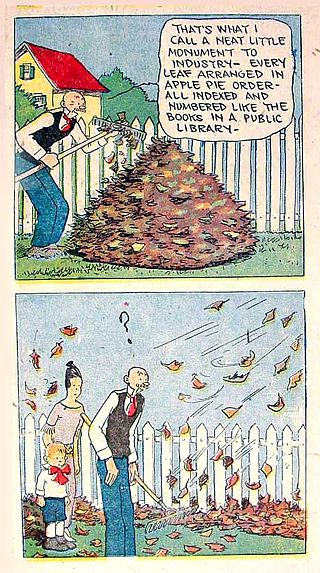
The Gumps is a comic strip about a middle-class family. It was created by Sidney Smith in 1917, launching a 42-year run in newspapers from February 12, 1917, until October 17, 1959.
Dudley Dexter Watkins was an English cartoonist and illustrator. He is best known for his characters Oor Wullie and The Broons; comic strips featuring them have appeared in the Scottish newspaper The Sunday Post since 1936, along with annual compilations. Watkins also illustrated comics such as The Beano, The Dandy, The Beezer and Topper, and provided illustrations for Christian stories. Watkins was posthumously inducted into the British Comic Awards Hall of Fame in 2015.

A topper in comic strip parlance is a small secondary strip seen along with a larger Sunday strip. In the 1920s and 1930s, leading cartoonists were given full pages in the Sunday comics sections, allowing them to add smaller strips and single-panel cartoons to their page.

The Newspaper Enterprise Association (NEA) is an editorial column and comic strip newspaper syndication service based in the United States and established in 1902. The oldest syndicate still in operation, the NEA was originally a secondary news service to the Scripps Howard News Service; it later evolved into a general syndicate best known for syndicating the comic strips Alley Oop, Our Boarding House, Freckles and His Friends, The Born Loser, Frank and Ernest, and Captain Easy / Wash Tubbs; in addition to an annual Christmas comic strip. Along with United Feature Syndicate, the NEA was part of United Media from 1978 to 2011, and is now a division of Andrews McMeel Syndication. The NEA once selected college All-America teams, and presented awards in professional football and professional [NBA] basketball.

Vincent Trout Hamlin, who preferred the name V. T. Hamlin, was an American comic strip cartoonist. He created the popular, long-run comic strip Alley Oop, syndicated by the Newspaper Enterprise Association.
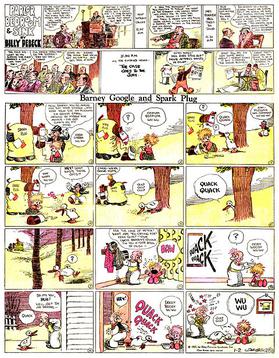
The Sunday comics or Sunday strip is the comic strip section carried in most western newspapers. Compared to weekday comics, Sunday comics tend to be full pages and are in color. Many newspaper readers called this section the Sunday funnies, the funny papers or simply the funnies.

The Teenie Weenies is a comic strip created and illustrated by William Donahey that first appeared in 1914 in the Chicago Tribune and ran for over 50 years. It consisted of normal-size objects intermingled with tiny protagonists. The comic strip characters were two inches tall and lived under a rose bush. They lived with "real world" size materials made from discarded objects like hats, jars, barrels, kegs, and boxes – all of which were gigantic to them.
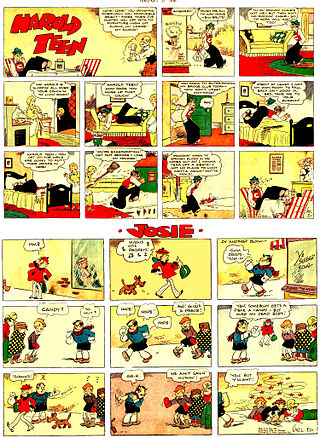
Harold Teen is a discontinued, long-running American comic strip written and drawn by Carl Ed. Publisher Joseph Medill Patterson may have suggested and certainly approved the strip's concept, loosely based on Booth Tarkington's successful novel Seventeen. The strip ran from 1919 to 1959. Asked in the late 1930s why he had started the strip, Ed answered, "Twenty years ago, there was no comic strip on adolescence. I thought every well-balanced comic sheet should have one."
Brian Crane is an American cartoonist who created Pickles, a comic strip featuring a retired couple, Earl and Opal Pickles, their family, and their family pets, Muffin (cat) and Roscoe (dog).

Our Boarding House is an American single-panel cartoon and comic strip created by Gene Ahern on October 3, 1921 and syndicated by Newspaper Enterprise Association. Set in a boarding house run by the sensible Mrs. Hoople, it drew humor from the interactions of her grandiose, tall-tale-telling husband, the self-styled Major Hoople, with the rooming-house denizens and his various friends and cronies.

Tillie the Toiler is a newspaper comic strip created by cartoonist Russ Westover who initially worked on his concept of a flapper character in a strip he titled Rose of the Office. With a title change, it sold to King Features Syndicate which carried the strip from January 3, 1921, to March 15, 1959.
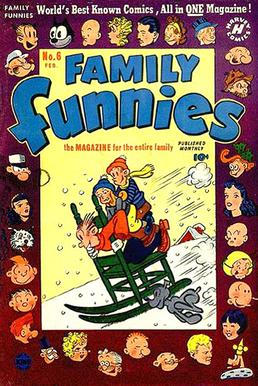
Toots and Casper is a family comic strip by Jimmy Murphy, distributed to newspapers for 37 years by King Features Syndicate, from December 17, 1918 to December 30, 1956. The strip spawned many merchandising tie-ins, including books, dolls, paper dolls, pins, bisque nodders and comic books.
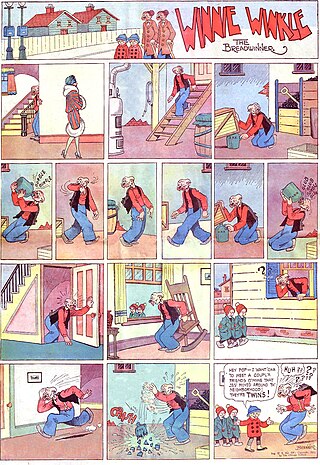
Winnie Winkle is an American comic strip published during a 76-year span (1920–1996). Ten film adaptations were also made. Its premise was conceived by Joseph Medill Patterson, but the stories and artwork were by Martin Branner, who wrote the strip for over 40 years. It was one of the first comic strips about working women. The main character was a young woman who had to support her parents and adopted brother, serving as a reflection of the changing role of women in society. It ran in more than 100 newspapers and translations of the strip's Sunday pages were made available in Europe, focusing on her little brother Perry Winkle and his gang.
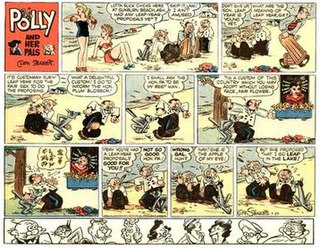
Polly and Her Pals is an American comic strip, created by cartoonist Cliff Sterrett, which ran from December 4, 1912, until December 7, 1958. It is regarded as one of the most graphically innovative strips of the 20th century. It debuted as Positive Polly on December 4, 1912, in William Randolph Hearst's newspapers, initially the New York Journal, and was later distributed by King Features Syndicate. The title changed to Polly and Her Pals on January 17, 1913.
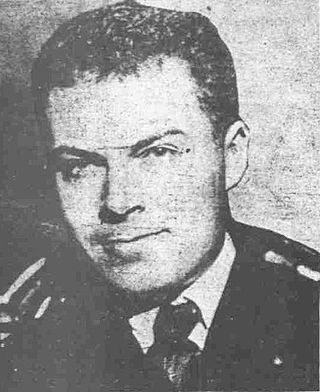
Clifford Sterrett was an American cartoonist best known as the creator of the comic strip Polly and Her Pals.

Freckles and his Friends is an American comic strip set in the peaceful small town of Shadyside where young Freckles McGoosey and his friends lived. Although the long-running strip, created by Merrill Blosser, is remembered for its continuing storyline involving a group of teenagers, it originally featured a child at the age of six or seven in gag-a-day situations.

Room and Board is the title of two American comic strips. The first, created by Sals Bostwick, debuted on May 21, 1928. He drew it until his death in 1930, after which it was continued by cartoonists Brandon Walsh, Benbee, Darrell McClure, Dow Walling and Herman Thomas before coming to an end in 1932.

Edgar Everett Martin, known to his family and friends as Abe Martin, was an American cartoonist, who kept his comic strip, Boots and Her Buddies, running for decades, eventually reaching an audience of 60 million readers.
Everybody's Sweetheart may refer to:




















